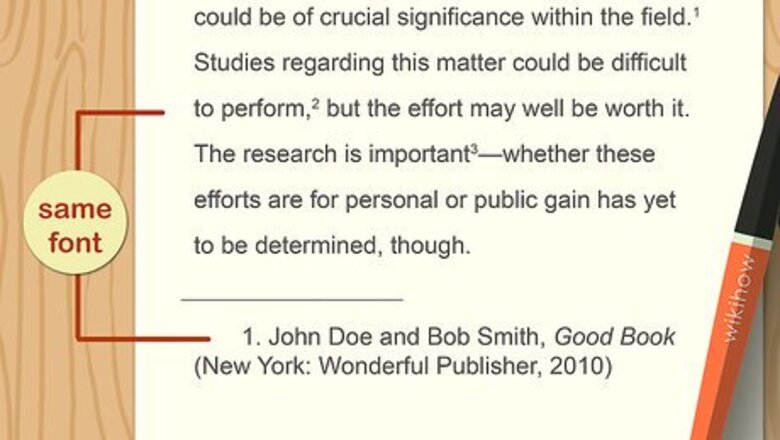
views
Setting Up Footnotes in Your Paper
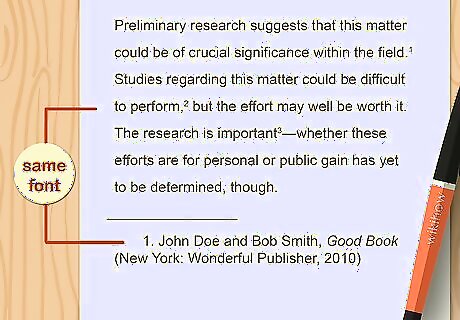
Use the same font throughout your paper. Typically, the default font on your word-processing app will be fine, or you can use Times New Roman. While your footnotes will be a smaller size, they should be the same font as your main text. The default text sizes for your word processing app typically will be acceptable. If you're writing a paper for a class and the instructor provides you with specific font sizes, use those. If you change the font for your main text, check the footnotes – they may still be in the default font.
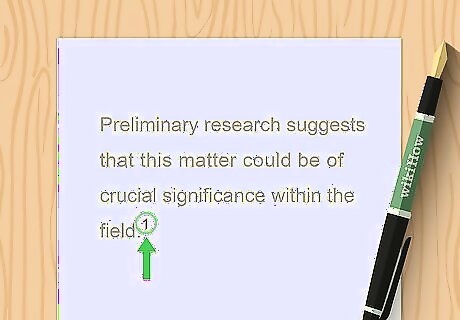
Insert a superscript number to place a footnote. Place a superscript Arabic number within the text to refer readers to a footnote. The footnote may contain a citation to a reference, explanatory material, or both. When you insert a footnote, your word processing app should automatically format them correctly for you. Check the footnote formatting if it isn't working properly and adjust as necessary. Example: "Preliminary research suggests that this matter could be of crucial significance within the field."
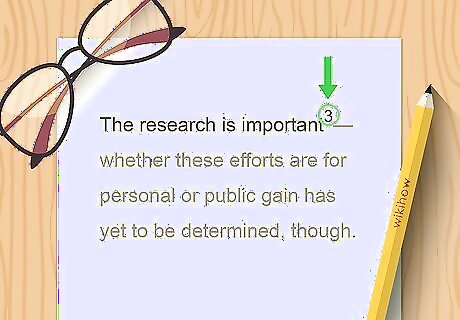
Place superscript numbers at the end of a sentence or clause. In most cases, you'll put the reference to the footnote at the end of the sentence. If necessary to distinguish between sources, you can place the superscript number at the end of the sentence clause you want to attribute to that source. Example: "Studies regarding this matter could be difficult to perform, but the effort may well be worth it." In this example, the footnote is placed after the comma in the first clause to demonstrate that the source does not indicate the effort to perform the studies would be worth it. Generally, superscript numbers should follow punctuation. There is an exception for a dash. For example: "The research is important—whether these efforts are for personal or public gain has yet to be determined, though." If you have a parenthetical phrase in a sentence, place the superscript number after the period as usual if the footnote applies to the sentence as a whole. If the footnote relates only to the material in parentheses, place it inside the closing parentheses. For example: "(Contradictory reports made in the past have already been proven inaccurate, as noted in the chart below.)"
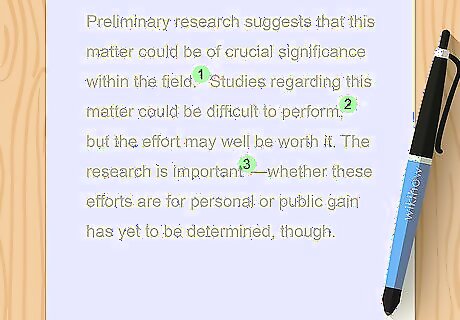
Number notes sequentially throughout your paper. When using CMS style, footnotes are numbered separately and do not reference your bibliography. For the purposes of numbering your footnotes, there is no distinction between referential footnotes (which contain a citation) and explanatory footnotes. Even if your paper has several sections, you generally will not restart numbering for each section. You may restart numbers if you are writing a lengthier work and have separate chapters. Discuss this with your editor or advisor.
Creating Referential Footnotes
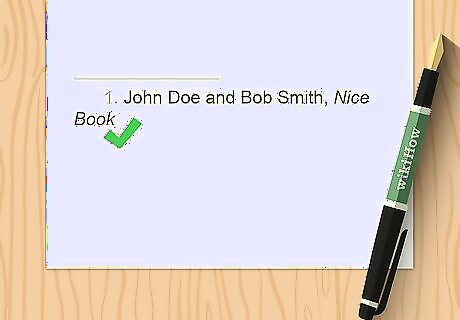
Start with the author's name and the title of the work. Although the specifics may differ depending on the type of work you're citing, all citations have the same basic elements. List the author by their first name, middle initial (if available), and then last name. Place a comma, and add the title of the work. If there is are 2 or 3 authors, list their names separated by commas, with an "and" before the last author's name. Use the order in which the authors are listed on the title page of the work. For example: John Doe and Bob Smith, Interesting Book If there are more than 4 authors, list the name of the first author followed by the abbreviation "et al." For example: Rebecca Johnson, et al., Another Great Book Generally, italicize book titles and place article titles in quotation marks. For articles, follow the title of the article with the name of the publication in which the article is found. Italicize the name of the publication.
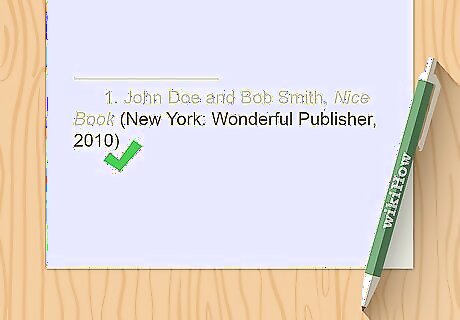
Provide publication information if necessary. Publication information isn't always required in a citation, particularly if you have a bibliography. If your instructor or editor requires it, or if you need it to distinguish one source from another, place it in parentheses after the title of the book. Example: John Doe and Bob Smith, Interesting Book (New York: Wonderful Publisher, 2010)
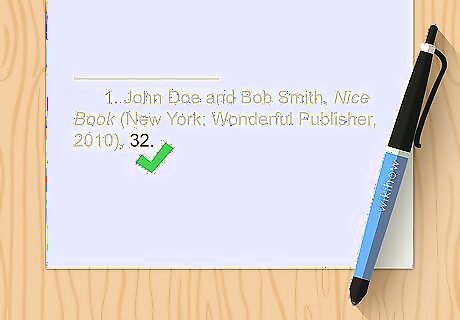
Include the page number where the cited material is found. Rarely, you'll be citing the whole work generally. In most cases, when you cite a work in a footnote you're referring to a particular passage of the text. The page number allows your reader to go directly to the material you've referenced. When citing a book, place a comma after the publication information (or title, if you didn't include publication information), then the page number. For example: John Doe and Bob Smith, Interesting Book (New York: Wonderful Publisher, 2010), 32. When citing an article in a journal or other publication, place a colon after the last element of your citation, followed by the page number. For example: Sue Rogers, "Clever Article," Very Important Journal 14, no. 3 (2011): 62.
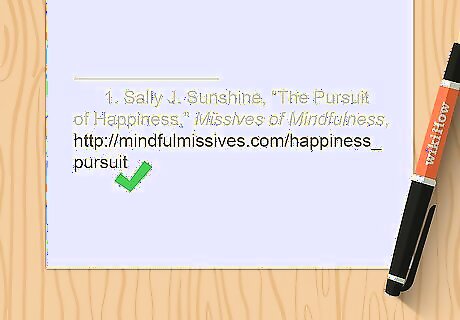
End with a URL for online sources. When you're citing an article on the internet, cite it just like you would an article from a magazine or other publication. Place the title in quotation marks, followed by the title of the website in italics. Place a comma after the title of the website, then include a direct URL to the article. Example: Sally J. Sunshine, "The Pursuit of Happiness," Missives of Mindfulness, http://mindfulmissives.com/happiness_pursuit
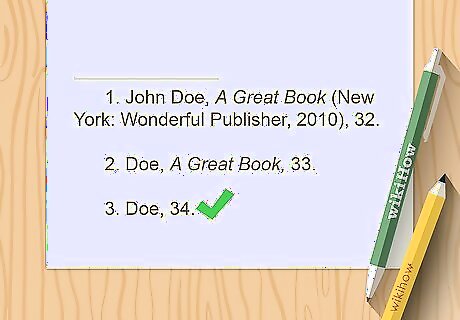
Shorten titles in subsequent mentions of the same source. Once you've provided the full citation for a source, you only need to use the last name of the author and a short version of the title when you reference it again. Include the page number, which will likely differ from previous mentions. Book example: Johnson, et al., Another Great Book, 117. Article example: Rogers, "Clever Article," 84. It may be helpful to make a list of all of your sources before you begin writing. That way you can mark them off when you've used them once, so you use shortened citations in future references.
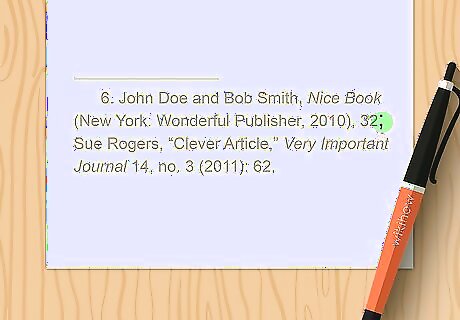
Separate multiple citations with semi-colons. In CMS style, you only have 1 superscript number at the end of a sentence. However, you may cite multiple sources within a single footnote. If you have multiple sources that support the statement made in your main text, list each of them separated by semicolons. Example: John Doe and Bob Smith, Interesting Book (New York: Wonderful Publisher, 2010), 32; Sue Rogers, "Clever Article," Very Important Journal 14, no. 3 (2011): 62. Signal phrases can be used if you want to indicate that one source disagrees with or contradicts another. For example: Sally J. Sunshine, "The Pursuit of Happiness," Missives of Mindfulness, http://mindfulmissives.com/happiness_pursuit; but see Annie A. Warbucks, Only a Day Away (New York: Big Apple Publishers, 2014), 44-48.
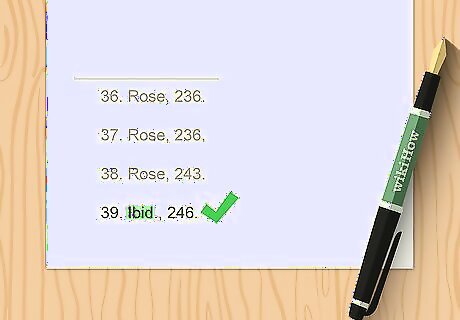
Use shortened citations for sources repeated consecutively. A footnote only applies to individual sentences (or clauses within a sentence), and cannot be used for a whole paragraph. For this reason, you may have several sentences in a row that reference the same source. When this happens, use the abbreviation "Ibid." instead of repeating the citation information. You still need to include the page number, if it differs from the previous mention. For example: Ibid., 24.
Including Contextual Footnotes
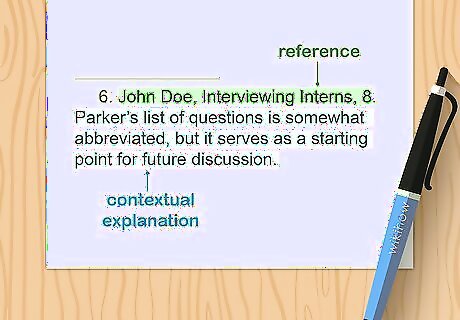
Cite references before adding a contextual explanation. Occasionally you'll have a contextual comment to make without citing any sources at all. However, when you are including both contextual or explanatory information along with a citation, the citation always comes first. Example: Peter Parker, Interviewing Interns, 24. Parker’s list of questions is somewhat abbreviated, but it serves as a starting point for future discussion.
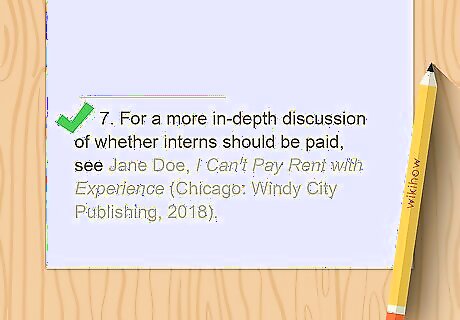
Point readers towards additional information. You may mention something briefly in your main text that deserves a fuller explanation or discussion, but is outside the parameters of your project. Use a footnote to let your readers know where they can find more information about that topic. Example: For a more in-depth discussion of whether interns should be paid, see Jane Doe, I Can't Pay Rent with Experience (Chicago: Windy City Publishing, 2018).
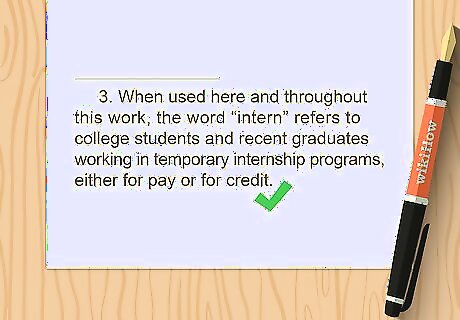
Provide working definitions or study parameters. Particularly if you're writing in a scientific field, you may need to define broad concepts for the purposes of your work. These types of footnotes also come in handy if you need to define a word that has both a general meaning and a different, technical meaning within your particular area of work or study. Example: When used here and throughout this work, the word "intern" refers to college students and recent graduates working in temporary internship programs, either for pay or for credit.
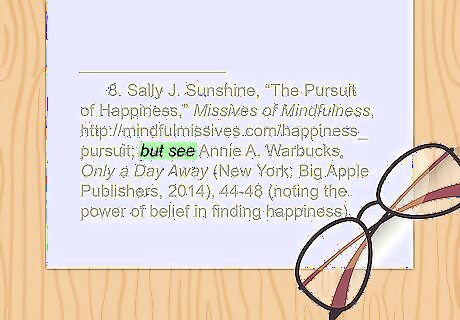
Offer clarification or analysis of a source or statement. When you include additional sources in a footnote beyond the first you're citing, you may want to place them in context by explaining their relationship to the first source. Do that with signal phrases, such as see also or but see. If you have any additional information about the source, place it in parentheses after the citation. Example: Sally J. Sunshine, "The Pursuit of Happiness," Missives of Mindfulness, http://mindfulmissives.com/happiness_pursuit; but see Annie A. Warbucks, Only a Day Away (New York: Big Apple Publishers, 2014), 44-48 (noting the power of belief in finding happiness).

Include tangential quotes or commentary from a source. You may have a source that said something interesting you'd like to quote, but it doesn't quite fit into your paper. If you think the quote would interest your readers, you can include it in parentheses after your citation. Example: Sally J. Sunshine, "The Pursuit of Happiness," Missives of Mindfulness, http://mindfulmissives.com/happiness_pursuit ("The idea of pursuing happiness is an exercise in futility. Happiness only exists where you exist, which is in the here and now.")

Drop a witty remark or humorous aside. When doing your research, it's likely you'll encounter a tangential fact that you find odd or humorous. You might also come up with a witty or humorous observation of your own on some aspect of your research. These can be included in a footnote, provided they are appropriate to the overall tone of your work. Example: Actor and writer Wil Wheaton has noted that "people die from exposure." Use these types of footnotes sparingly, depending on your audience. For example, if you're writing a paper for a class and you know your instructor has a healthy sense of humor, such a footnote might be appreciated.


















Comments
0 comment